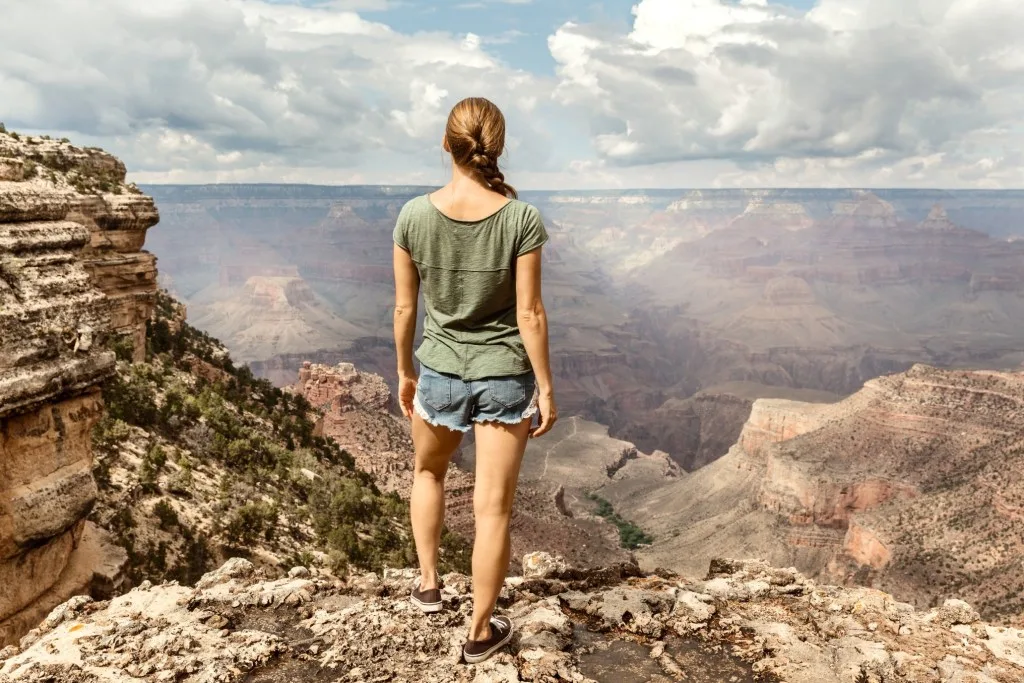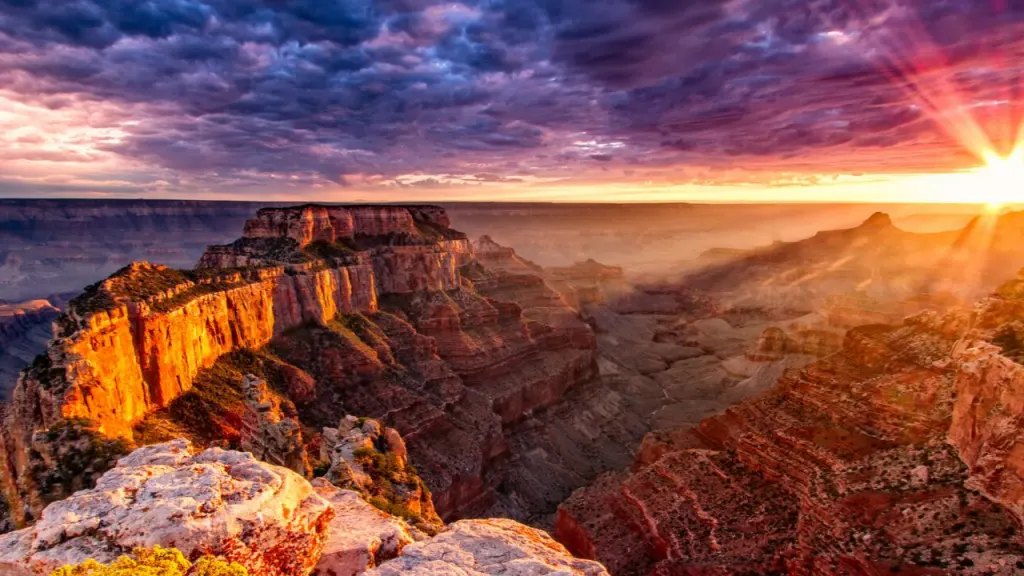There’s nothing quite like rolling into the Grand Canyon with our camper, ready to soak in one of nature’s most jaw-dropping wonders. But let’s face it—planning a camping trip here isn’t as straightforward as following your GPS and hoping for the best.
After a few trips filled with avoidable mishaps and “learning experiences,” we’ve compiled the secret rules of Grand Canyon camping that no one bothered to mention.
Consider this your unofficial guide to not messing up your adventure.

1. Don’t Choose the Wrong RV Campground
Believe it or not, not all campgrounds are created equal—especially around the Grand Canyon. Picking the wrong one can turn your dream trip into a logistical nightmare faster than you can say “full hookup.” The South Rim offers two main options for RVers: Mather Campground and Trailer Village.
Mather Campground is great if you’re into rustic camping and don’t mind the absence of electricity, water, or sewer hookups. We tried this once during a summer heatwave and discovered that our RV turns into an oven without AC. Fun times.
On the other hand, Trailer Village provides full hookups, which means you can enjoy the modern conveniences of air conditioning and running water—a luxury you won’t fully appreciate until you’re without it.
The North Rim has the North Rim Campground, which is less crowded but also offers fewer amenities. The trade-off? Stunning views and a cooler climate. But don’t expect Wi-Fi or reliable cell service; it’s like stepping back into a time before we were all glued to our screens.
Pro Tip: Book your campground well in advance. Spots fill up quicker than a gas tank on a cross-country road trip. Also, double-check the amenities so you’re not surprised when you arrive—unless you enjoy unexpected bouts of primitive camping.

2. Don’t Forget About Free Camping
Yes, free camping near the Grand Canyon is a thing, and it’s called dispersed camping in the Kaibab National Forest. If you’re self-contained and don’t require the frills of a traditional campground, this could be your ticket to solitude and savings.
We stumbled upon this gem after arriving to find all the campgrounds full. Setting up camp among the pines with no one else around felt like discovering uncharted territory. The night sky was incredible without the usual light pollution—just us and a galaxy of stars.
But let’s be clear: “free” comes at a cost. There are no facilities, so you’re on your own for water, waste disposal, and amenities. It’s essential to come prepared because the nearest store could be miles away, and running out of toilet paper in the wilderness isn’t the adventure you’re looking for.
Pro Tip: Always practice Leave No Trace principles. Just because you’re off the grid doesn’t mean you should treat the forest like your personal trash can. Also, check local regulations and fire restrictions before setting up camp.

3. Don’t Miss The North Rim
The South Rim gets all the hype, but the North Rim is the Grand Canyon’s best-kept secret. With only about 10% of the park’s visitors making it here, it’s like having an exclusive pass to the VIP section of one of the world’s most popular natural attractions.
We made the trek to the North Rim and were rewarded with breathtaking views minus the crowds and selfie sticks. The higher elevation means cooler temperatures and a different perspective of the canyon’s grandeur. It’s a refreshing change from the bustling South Rim, offering tranquility that’s hard to find these days.
However, the North Rim is only open from mid-May to mid-October, weather permitting. Services are limited, and the area is more remote, so planning is crucial. But trust us, the serenity and untouched beauty make it well worth the effort.
Pro Tip: Fill up your gas tank before heading to the North Rim. Services are sparse, and the last thing you want is to be stranded in the middle of nowhere. Also, bring supplies since the general store options are limited and overpriced.

4. Don’t Count Out The Lodges
Wait, lodges? In an article about camping? Hear us out. Sometimes it’s okay to trade your sleeping bag for a real bed—especially if that bed comes with a view of the Grand Canyon at sunrise. The lodges offer a different way to experience the park without sacrificing the spirit of adventure.
We splurged on a night at the historic El Tovar Hotel on the South Rim, and it was like stepping back into a more elegant time. The architecture, the history, and let’s be honest, the indoor plumbing were a nice change of pace. Plus, waking up steps away from the canyon’s edge without having to navigate morning RV chores was a treat.
On the North Rim, the Grand Canyon Lodge offers rustic cabins and motel rooms with killer views. It’s less about luxury and more about soaking in the natural beauty without the hassle of setting up camp.
Pro Tip: Even if you don’t stay overnight, consider dining at one of the lodge restaurants. The meals are a cut above campfire cuisine, and the panoramic views from your table aren’t too shabby either.

5. Don’t Begin Without Specific RV Routing First
Getting to the Grand Canyon isn’t as simple as following your GPS. Some roads aren’t RV-friendly, and others might lead you on a wild goose chase through unpaved terrain. Trust us, nothing tests a relationship like navigating a 30-foot RV down a one-lane dirt road with no turnaround.
We learned this the hard way when our GPS suggested a “shortcut” that was anything but. After an hour of white-knuckle driving and a near-miss with a stubborn mule deer, we vowed never to trust technology blindly again.
Stick to main highways like AZ-64 for the South Rim and AZ-67 for the North Rim. These roads are well-maintained and suitable for larger vehicles. Always check the National Park Service website for the most up-to-date information on road conditions and recommended routes.
Pro Tip: Cell service can be unreliable as you approach the park. Download offline maps or, better yet, invest in a good old-fashioned RV paper atlas. It won’t lose signal, and it doesn’t require a charger.
6. Don’t Miss the Trails
Sure, the viewpoints are spectacular, but experiencing the Grand Canyon solely from the rim is like going to a concert and listening from the parking lot. To truly appreciate its grandeur, you need to venture onto the trails.
We tackled the Bright Angel Trail—not all the way to the bottom because we’re adventurous, not crazy—but enough to get a different perspective of the canyon’s immense scale. The descent was easy; the climb back up, not so much. But the sense of accomplishment (and the bragging rights) made every huff and puff worthwhile.
If you’re not up for a strenuous hike, the Rim Trail offers miles of mostly flat paths with stunning views and plenty of benches for contemplation—or catching your breath. Either way, don’t skip the trails. They’re the heart of the Grand Canyon experience.
Pro Tip: Start your hikes early to avoid the midday heat and crowds. Always bring more water than you think you’ll need. And remember, going down is optional; coming back up is mandatory.

7. Don’t Leave Food in Your Campsite
This might seem like a no-brainer, but you’d be amazed at how many people treat their campsite like a backyard barbecue. The Grand Canyon is home to a variety of wildlife that would love nothing more than to rummage through your leftovers.
We made the mistake of leaving a cooler outside overnight, only to find it ransacked by what we can only assume was a very determined squirrel—or a small bear with opposable thumbs. Either way, we lost our snacks and gained a valuable lesson in campground security.
Store all food, trash, and scented items in your RV or designated food lockers. This isn’t just about protecting your stash; it’s about keeping wildlife safe and wild. Plus, nobody wants to wake up to a critter party in their campsite.
Pro Tip: Clean up thoroughly after meals. Even small crumbs can attract unwanted visitors. And for the love of all things holy, don’t feed the animals. It might make for a cute photo op, but it’s harmful in the long run.
How to Spend the Perfect Three Days at the Grand Canyon
So you’ve got three days to make the most of this natural wonder. Here’s how we’d do it:
Day 1: South Rim Exploration
- Morning: Settle into Trailer Village RV Park (because you wisely booked ahead). Take the shuttle to Mather Point for your first breathtaking view of the canyon.
- Afternoon: Hike a portion of the Bright Angel Trail. Remember, you don’t have to go all the way down to enjoy the experience.
- Evening: Catch the sunset at Hopi Point. It’s popular for a reason—the colors are surreal.

Day 2: North Rim Adventure
- Morning: Drive to the North Rim. Yes, it’s a bit of a haul, but the scenery and serenity are worth it.
- Afternoon: Check into the North Rim Campground. Explore the Transept Trail or relax at the lodge with a cold beverage.
- Evening: Enjoy a quiet dinner at the Grand Canyon Lodge. Watch the sunset from the deck and relish the absence of crowds.
Day 3: Hidden Gems and Farewell
- Morning: Visit Cape Royal and Point Imperial for some of the best views you’ve probably never heard of.
- Afternoon: Make your way back to the South Rim. If time permits, stop at Desert View Watchtower.
- Evening: Have a farewell dinner at El Tovar Dining Room. Toast to a trip well-planned and memories made.
Final Thoughts: Be flexible. Weather, road conditions, and life, in general, can throw curveballs. Embrace the unexpected—that’s where the best stories come from.
Grand Canyon Camping Done Right!
Camping at the Grand Canyon is more than just a trip; it’s an experience that stays with you long after you’ve returned to the daily grind.
By avoiding these common pitfalls, you’re setting yourself up for an adventure that’s memorable for all the right reasons. So pack wisely, plan ahead, and don’t forget to look up from your camera actually to enjoy the view.
We’ll Help You Find the Best Free Camping in the USA
You should give it a try!
As a matter of fact, these free campsites are yours to enjoy. Every time you pay federal taxes, you’re contributing to these lands.
Become a FREE CAMPING INSIDER and join the 100,000 campers who love to score the best site!
We’ll send you the 50 Best Free Campsites in the USA (one per state). Access the list by submitting your email below: